| GNSS | |
Offshore application of EGNOS
|
||||
Oil was first commercially exploited in the North Sea in the 1960’s. Production is underpinned by regular and reliable helicopter operations enabling the movement of staff and equipment to and from the shore. However, the North Sea environment is challenging for rotorcraft operations from many perspectives, not least its remoteness from the shore, the exacting weather conditions and the changeable nature of rigs. There have been six fatal accidents since 1976, with the loss of 79 lives. Today there are more than 300 helidecks in the UK sector alone being serviced by regular flights. Approach options in Instrument Meteorological Conditions (IMC) are limited to using the aircrafts’ weather radar to identify the rig. This is neither designed nor certified for the task and following a UK Civil Aviation Authority (CAA) review the need for an accurate and reliable instrument approach aid for conducting offshore approaches has been highlighted. With support from the UK CAA, the GNSS Supervisory Authority’s (GSA) GIANT project has sought to develop a new approach procedure based upon SBAS guidance, in this case EGNOS. Table 1 Figure 1 North sea operationsThe North Sea – particularly at the latitudes of the oil fields – can be an inhospitable environment. A helicopter operating to the rigs is exposed to the full wrath of the weather. During winter lightning strikes to helicopters are common. There is hail and sleet to contend with along with icing conditions at typical operating flight levels. Furthermore the helipads can be located hundreds of feet from sea level. This means that a cloud base of down to 200’ may obscure the pad. Even without the weather there are still many factors for the flight crew to contend with that are of particular significance once operating in IMC on an instrument approach. Whilst many oil platforms are fixed in their location a number of rigs are moveable and can be relocated at short notice. Some platforms are semi-submersible – tethered to the sea bed, but still free to heave on a heavy swell. Rigs often have moving cranes, gantries and chimneys that are used in ‘flaring’ – burning natural gas. Perhaps most hazardous for a crew on an instrument approach is the potential for moving obstacles. It is not unknown for supply vessels to arrive at the rig whilst the aircraft is on approach. As many of these ships are relatively large their superstructure can easily impinge on the planned flight path. Despite all of these factors the vast majority of approaches are conducted successfully – even those in IMC at night. This is testimony to the skill and training of the current flight crews. The current instrument approach procedures to North Sea oil rigs utilise the aircrafts’ weather radar. They are known as Airborne Radar Approaches (ARA). The helicopter initially navigates to the proximity of the rig, it then identifies.the rig using the weather radar display and flies toward it descending on the altimeter at the same time. When closing on the rig the crew will level off and adopt an offset heading to guide them abeam the rig whilst still maintaining radar contact. If by the closest point on this approach (typically 0.75NM) the crew have not achieved visual contact with the rig they will instigate a banking, climbing missed approach. In addition to being used for navigation the weather radar is used continually to look for other mobile obstacles in the final approach such as supply ships. EGNOS in the North Sea environmentEGNOS provides accuracy and integrity sufficient to enable guided vertical descent procedures and its ability to contain the gross navigation system errors could also permit closer approaches to the rigs to remove the necessity for a climbing, turning missed approach procedure. EGNOS could also maintain cost effectiveness as it requires no ground infrastructure on rigs. Removal of the traditional procedures using radar equipment not intended for the task, together with the ability to autopilot couple the EGNOS guidance to aid workload could all help to improve achieved safety levels and perhaps even operating minima in the future. However, the majority of platforms are located in the latitude range of 58°N to 63°N. At these latitudes the EGNOS geostationary satellites are at a low elevation angle (approx 20-25°) and appear clustered in the sky to the south. This factor coupled with the often suboptimal GPS antenna installations common on rotorcraft result in a major challenge to the successful application of EGNOS in this environment. [Table 1] A new approachAn ideal offshore approach procedure would have a number of new features. Ideally the approach would be straight in but offset from the rig. This would allow for an optimal straight ahead climb for the missed approach. The approach should bring the helicopter close enough to enable visual identification whilst also far enough away to allow for final speed and height adjustments. One positive element of the current ARA approach procedure is that it provides the crew with the ability to choose their approach heading. This flexibility should not be lost as it allows the crew to optimise their approach taking into account wind direction whilst maintaining clearance from moving obstacles or superstructure. This would however, require the SBAS avionics to generate the approach procedure on-the-fly. This is a challenging requirement for current avionics as SBAS approaches usually consist of a set of waypoints that are typically hard coded in a database. New approach procedures should be able to provide guidance to the aircraft autopilot. This will help to reduce overall cockpit workload during the critical approach phase of flight and allow the crew to focus on just monitoring the guidance whilst undertaking other tasks. Ideally the procedure should also provide guidance for the descent too that will encompass a stable descent (typically 4° to 6°). The potential for mobile obstacles will remain a reality of North Sea operations. Therefore a new procedure will still need to provide the crew with the ability to ensure that the path ahead of them remains clear of obstacles. It is likely therefore that the need will remain for the use of the weather radar even on an SBAS approach. SOAP trial procedureWithin the GIANT project a new offshore oilrig approach procedure was designed that used EGNOS to address the recognised shortcomings of the ARA. The result of this work is the SBAS Offshore Approach Procedure (SOAP). The approach is divided into four segments [Figure 1]. The arrival segment is used for the helicopter to descend to the minimum safe altitude of 1500ft. Once the helicopter reaches the Initial Approach Fix (IAF) it enters the initial approach segment, in which it aligns itself on the final approach heading and decelerates to the final approach speed between 60kts and 80kts – depending on the environment and the capabilities of the helicopter. During this time the crew use the weather radar to check the system-generated final approach and missed approach areas and verify that they are clear of radar returns. On reaching the Final Approach Fix (FAF), the helicopter enters the final approach segment and begins its descent to the Minimum Descent Height (MDH, defined as the height of the rig’s helideck plus 50ft, with a minimum value of 200ft in daylight and 300ft at night). The descent angle can vary depending on the elected final approach speed. Once the helicopter reaches the MDH, it flies a level segment during which the pilot and co-pilot attempt to acquire visual contact with the rig. If visual contact is not made, the helicopter will reach the Missed Approach Point (MAP) and perform a missed approach procedure simply by climbing straight ahead at the steepest safe angle. The various lengths and angles of the approach procedure can be seen in the figure [Figure 2]. Certain points, such as the FAF, are positioned depending on distances that will vary, such as the distance covered whilst the helicopter is descending (which depends on the descent angle and the MDH value). The procedure also dictates the sensitivity of the guidance to be used, which can be seen in the two figures (3 & 4), the first showing lateral sensitivity and the second showing vertical sensitivity. Throughout the procedure, lateral guidance is provided by EGNOS. Vertical guidance during the arrival and initial approach segments is provided by the helicopter’s baro-altimeter, and by EGNOS backed up by the radar altimeter during the final approach segment. |
||||
Steve Leighton
|
|||||||||||||||
Flight simulationsAs part of the design process for the SOAP approach, a set of simulation trials were carried out in order to determine the optimum values of certain parameters in the procedure description and evaluate its overall flyability. These trials were carried out in the Eurocopter SPHERE facility, in Marignane, France. The pilots involved included representatives from various different offshore operators. The SOAP procedure was flown in the simulator using different values for the Minimum Decision Range (MDR), descent slope, maximum offset angle between the final approach track and the track from MAP to rig, and final horizontal and vertical airspeeds. These were tested against different wind directions and speeds, and a visual range slightly above the MDR value. The primary results from the simulation trials were that the final visual approach and deceleration towards the rig is the most critical of the procedure, and must be at least 0.75NM for a final groundspeed of 80kts, but could be reduced to 0.5NM for a groundspeed of 60kts. It was agreed that a glideslope of 6° was too steep at a groundspeed of 80kts, and that at this speed 4° should be the maximum. A maximum offset angle of 30° was agreed, with 45° making it hard to establish visual contact in the difficult visual conditions. Also tested was the presentation of the vertical guidance provided to the pilot. Some pilots preferred the ‘Procedural guidance’ [Figure 3] in which an ILSlike glideslope beam was provided during the descent but not during the level segment, whereas others preferred the ‘Full ILS-like guidance’ [Figure 4] in which a linear vertical deviation scale was provided on the level segment in addition to the ILS-glideslope. Overall the trials were deemed to be successful and of sufficient quality that the results were used to finalise the approach procedure as described above. Flight trialsThe Geostationary satellites broadcasting the SBAS correction message appear at a low elevation angle at the Northerly latitudes of many of the oil platforms Figure 2 Figure 3 Figure 4 Figure 5 where the helicopters will be operating. When coupled with the potential occurrence of signal masking by the airframe of the helicopter itself, and sub-optimal antenna location, visibility constraints could be significant barriers for EGNOS usage. To assess the practical impact of these parameters the GIANT project undertook a helicopter flight trial to investigate the signal availability of EGNOS under representative conditions. The trial platform was a Eurocopter AS.332L Super Puma operated by CHC Scotia helicopters out of Aberdeen [Figure 5] and is a typical aircraft that works in the North Sea environment. The trial took place near Aberdeen airport in Northern Scotland. At this latitude the three EGNOS geostationary satellites are at a very low elevation angle to the South. The helicopter had a typical GNSS antenna installation that is currently used as an input to a Canadian Marconi CMA3012 GPS receiver that in turn provides position input to the aircraft Flight Management System (FMS). For the purposes of the trial the aircraft’s own antenna was used. The location [Figure 6] is on the tail boom, just above the rear of the passenger cabin. There was expected to be clear airframe masking from the main cabin and engine assembly ahead, as well as possibly from the tail itself to the rear. This was expected to fully obscure reception of SBAS Geo signals in a 70° arc ahead of the antenna. The objectives of the trial were to examine the extent to which airframe masking impacts SBAS satellite reception as well as the practical implications of real world antenna installations on EGNOS performance. To this end a Septentrio PolaRx2 SBAS capable data logging receiver was installed on board the helicopter connected to the main antenna. This was configured to receive all SBAS satellites in view. Data was also logged through the helicopter’s own flight data recording system so that aircraft attitude parameters were available. During the trial the aircraft undertook a series of orbits at constant bank angles and altitude. The objective being to record data on the practical masking effect on the visible SBAS geostationary satellites. It was found that engine masking caused the receiver to sequentially lose lock on the three satellites during periods where the helicopter’s heading moved through due South. Whilst the period of total SBASsignal loss was only about 20 seconds in each case, the individual satellites were each obscured for up to 100 seconds. In the operational EGNOS space segment of only two satellites this could present a risk. The horizontal and vertical protection levels calculated by the receiver were well within the requirements for APV approach procedures whilst SBAS satellites were in view. However there were notable spikes in the protection levels during periods where no SBAS satellites were being tracked. These spikes would have exceeded alarm limits for APVII, LPV200 and APV-I approaches. Finally a number of representative SOAP-like approaches were undertaken to the four compass headings to allow the collection of data on the practical performance of EGNOS under representative flight dynamics. The constant heading meant that there were no periods in which SBAS-tracking was completely lost, and as such the protection limits were always within APV-II alert limits. As expected flying the approach in a southerly direction caused significant constraints to the visibility of the GEOs, whilst the northfacing approach saw all three satellites being consistently tracked. Surprisingly, it was found that when flying the approach East or West only the AOR-E satellite was consistently in view. It is possible that this was due to the low antenna gain characteristics at low elevation angles resulting in successful tracking of the highest elevation satellite only. The flight trials clearly show that in certain situations the orientation of the helicopter can cause the receiver to lose track of all SBAS satellites, denying it the guidance required to perform APV approaches. Whilst the current antenna position is well suited to providing an input for the GPS navigator, to support SOAP operations it would ideally be relocated or else augmented with a second antenna to reduce the effect of airframe masking. Figure 6 ConclusionsThe GIANT project has been pushing ahead with the necessary activities to make EGNOS a viable navigation system in the hazardous North Sea environment. Procedure development, flight simulations and flight trials have all contributed to the development of SOAP helicopter approaches and will feed into a potential future implementation process. |
|||||||||||||||
|
|||||||||||||||
|
Pages: 1 2



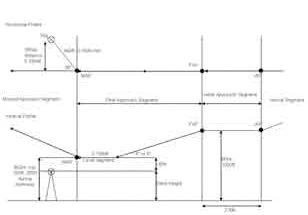
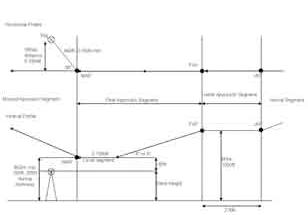

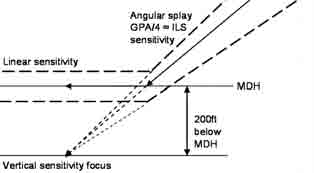
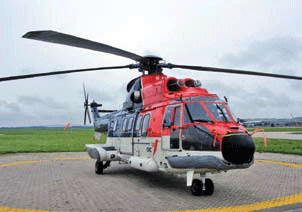
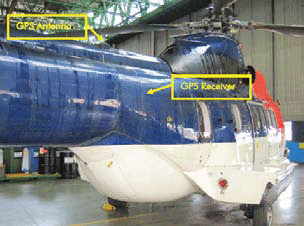












 (2 votes, average: 3.00 out of 5)
(2 votes, average: 3.00 out of 5)




Leave your response!